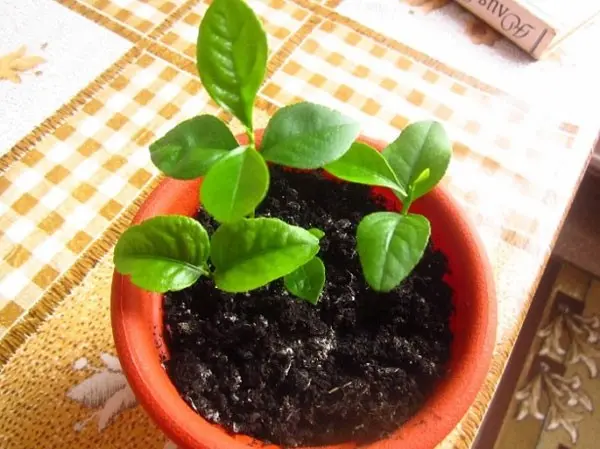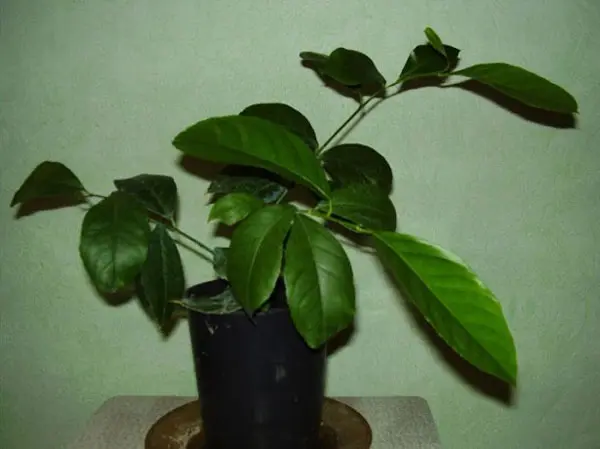Contents
Indoor lemon has graced the window sills of citrus lovers for over 300 years. When caring for him, timely transplantation is important, it is transshipment. Since the root system of the culture is limited by the size of the pot, such a procedure is carried out in the second half of February before the start of active development, or in the summer between two growth waves. From the article you will learn how to transplant a lemon tree.
Why is a transplant needed?
The plant is regularly moved to a new container as it matures: trees aged 2–3 years are transplanted 2 times a year, 3–4 years old – 1 time, 4–7 years old – 1 time in 2 years, those that have reached the age of 10 years – once a 10 years.
Along with planned transplants, others are also carried out, which depends on the condition of the home lemon bush:
- if it is bought in a small container, from the drainage holes of which roots are visible;
- when a culture grown at home has roots around the trunk and is cramped;
- the earth began to turn sour, a putrid smell is felt, midges were found;
- the soil is depleted, flowers do not tie.

Video “Transplanting a lemon tree”
From this video you will learn about the technology of transplanting a lemon tree at home.
Preparatory stages
Before you independently transplant a lemon with fruits or just bought in a store, you need to prepare a container and soil.
Soil selection
You can buy ready-made soil in the store or make it yourself by combining in equal proportions sifted river sand, manure or humus from the forest, as well as earth treated with insect and bacteria preparation. Components rich in nitrogen and phosphorus are also added there, then the transplanted citrus can not be fed in the first few months.
Before planting, it is better to sterilize the ground in a water bath, placing the container in another, more spacious one, and heating it for 1,5 hours. The land from the garden is not suitable for growing, it is acidic and not very loose, citrus fruits often do not bloom in it and do not bear fruit.

Pot selection
The new container should be a couple of centimeters larger than the existing one, have drainage holes. For citrus fruits older than 7 years, pots with a narrow bottom and a large neck are preferred.
Large lemon trees are best transplanted into pine or oak pots, after firing the container from the inside to form a layer of charcoal for disinfection and protection from decay. An excellent choice would be a container made of dark plastic, allowing plants to get a lot of water and nutrients.
The container can be white plastic or ceramic pots. In the first case, they are advised to wrap them in a thick dark cloth or place them in a flower pot, in the second case, the container must be kept in warm water for a couple of hours before planting.

As a drainage, it is customary to use river sand, which passes moisture well, expanded clay, that is, pebbles made of burnt clay, which perfectly absorb water and let air through, poured on the bottom with a layer of up to 5 cm.
In the case of a clay container with one drainage hole, it is recommended to close it with a clay shard placed with the convex side up so that excess water can drain.
Transplant instructions
A transplant should not be planned for the period of budding, setting and active fruit growth. For flower growers who are interested in when it is better to transplant a lemon, let us explain: it would be correct to organize planting in early spring, late autumn or summer between two growth periods.
The plant is removed from the container, the roots are inspected and the rotted parts are removed, the root system is dusted with Kornevin, after which the earthen lump must be dried. In the ground, poured over the drainage layer, a recess is made, the lump is placed in a new container so that the root neck of the tree is flush with the edges.
The soil is filled up in layers, gently compacted with a stick or manually. Watering is carried out with settled water and light loosening. To eliminate stress in a culture, it is advised to spray it with Zircon and place it under cellophane for a week.

Features of transplanting tall lemons
Adult lemons up to 3 m tall are more difficult to transplant than ordinary ones. When performing work, it is required to wrap the trunk with a stick and insert it into a loop made of rope. Further, resting the stick on the stand, the other end should lift the plant and fix it by removing the old container from the earthy coma. A new container is substituted under the culture, where the tree falls. Then you need to fill the empty space with soil, remove the fabric from the trunk and water it. It is also possible to partially replace the old land with a new one.
Aftercare
In order to try your sour and healthy citrus fruit in the future, after transplanting, the plant needs to be shaded, and after a couple of days, rearranged on a lighted windowsill. And do not forget about regular watering, organic and mineral top dressing, as well as pruning dry roots and upper shoots.









